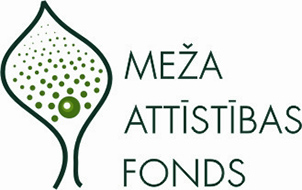Study supported by the Forest Development fund (agreement No. 23-00-S0MF01-000004)

On December 11, 2019, the European Commission (EC) issued the statement "European green deal" or "European green deal". Building on the European Green Deal, on 20 May 2020 the EC launched a communication on the "EU Biodiversity Strategy 2030".
The aim of the study is to provide a data-based scientific assessment and advice to the Ministry of Agriculture on draft documents developed by the European Commission that affect the forest sector and are prepared for the implementation of the European Union Biodiversity Strategy 2030 and the European Union Forest Strategy 2030.
Tasks of the Study
- To evaluate the forest criteria and data acquisition possibilities contained in the draft documents developed by the European Commission, which affect the forest sector and have been prepared for the implementation of the European Union Biodiversity Strategy 2030 and the European Union Forest Strategy 2030, paying special attention to the draft Nature Restoration Regulation, in the proposal for EU forest monitoring and strategic plans, as well as the Taxonomy Regulation Project on Biodiversity Conservation.
- To provide a data-based scientific assessment and consultations to the Ministry of Agriculture on the possibility of achieving the goals contained in the documents and the impact on forest growth, forest management and the availability of forest resources in Latvia. Including analyzing proposals from other countries.
- Familiarize yourself with the Regulation of the European Parliament and the Council on the availability of goods and products related to deforestation and forest degradation on the Union market, as well as exports from the Union, which repeals Regulation (EU) No. 995/2010 for the definitions - "deforestation", "forest degradation" and "naturally regenerating forests", to compare data acquisition possibilities using the existing statistical forest monitoring methods and the definitions established in Latvian regulatory acts, as well as to evaluate the possibility of using remote sensing in information acquisition and inspections research methods.
- Participate in the work of the EC subgroup on forest monitoring and forest strategic plans and provide proposals on the issues discussed therein.
Results of Study
- Analyzing the documents prepared by the European Commission, it has been found that they are largely based on the protection of biological diversity as a priority, describing in detail the proportions of protected areas to be achieved, the time periods by which it must be done. A significant emphasis is placed on the fact that the data prepared by the member states must be spatially identifiable, which means that it is necessary to improve remote research competencies in the monitoring of forest resources, although at the same time EC documents provide for the centralization of data collection in the European Environment Agency and the United Research Center.
- The basic principles for data analysis have been developed and prepared on the basis of the tool created by LSFRI "Silava" for modeling the development of forest resources. A detailed analysis is not possible in a number of aspects because there is not enough information.
- With regard to definitions, it has been established that the definitions used in Latvia differ from those used in international documents, but the structure and volume of MRM data allows for the harmonization of most of them and the use of remote sensing data accordingly.
- The documents prepared by the EC were evaluated and commented on in relation to the comments made in the working meetings by participating in the working meetings.